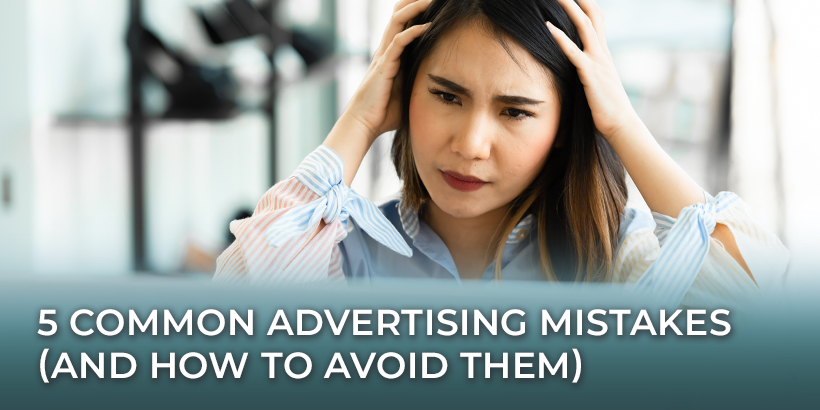
When you have an idea for a campaign, from time to time, you may hear a colleague say, “We already tried that. It didn’t work.”
But in advertising, if a campaign doesn’t produce the results you were expecting, that’s not always an indicator that it was a bad idea. Sometimes a simple mistake is the reason an ad campaign didn’t perform as it should have.
Here are five common advertising mistakes that even some of the biggest brands make.
1. Creating an inconsistent experience
To your audience, each stage of your campaign should feel like one continuous experience. Every step of the way should affirm and build on the promise that got them to click your ad.
The call to action (CTA) from your ad shapes their expectations for what they’re going to see and do on your landing page. The CTA on your landing page shapes their expectations for what you’re going to email them. And your lead magnet needs to deliver, or they’re not going to care about your sales pitch.
If any part of that experience feels disconnected, your campaign will underperform. People will click through your ad and feel like they’re in the wrong place. Or they’ll get your first email and think it was a bait and switch.
The challenge for brands is that each piece of your campaign must be designed with the others in mind. You might have a brilliant idea for an ad, but if it doesn’t make sense to go from that call to action to the heading on your landing page, it’s going to hurt your conversion rate.
Your ads, landing page, and follow-up messaging all need to create a cohesive experience.
2. Not branding your content
Sites like Unsplash, Pixabay, and Pexels put a wealth of free stock images at your fingertips. Using free stock images can save a lot of time when you’re trying to produce ads quickly or with a tight design budget, but if you don’t brand these images and make them fit, it can make your ad (and by extension, your brand) look tacky and cheap.
The problem with free stock images is that they aren’t designed for any particular brand. And lots of brands use them. They’re generic. But your brand isn’t. Branding your images takes more time and money, but if you use generic, unbranded images, your ad feels generic, too.
3. Using the same ad for different audiences
When someone sees your ad, you want them to think, “This is for me.” But that only happens if you’ve crafted it to fit your specific audience. It should be immediately clear who you’re talking to. Their job, values, or desires should clearly come through your copy and imagery.
Reusing ad assets is only effective when you’re targeting audiences that look alike. Different audiences have different goals and different roles. So when you talk to them as though they’re the same, you can’t expect a consistent response. As much as possible, you need to customize your ads to fit your audience.
4. Letting writing errors slide
Whether you’re a well-known brand or a scrappy startup, typos, grammatical errors, and sloppy writing practices will hurt your ad (and your brand) every time. Punctuation changes how people read your ad and what you’re actually communicating, so misplaced commas and apostrophes make people feel like you don’t even know what you’re trying to say.
This is basic quality control. If you let writing errors slip through the cracks, people will question your brand’s expertise, professionalism, and legitimacy. And they’re a lot less likely to click and convert.
5. Forgetting a call to action
Want people to click through your ad? Tell them. And give them a reason to. Especially if you’re doing a high-level brand awareness campaign, it’s easy to forget that people won’t do anything unless you tell them to. Forgetting a call to action makes it effortless to ignore your ad.
Effective ads give people a reason to click. And that reason comes from a combination of your copy and your button text. If your copy is too vague or broad, it’s not clear what will happen when someone clicks—or why they even should.
High-quality ads, high-quality results
Don’t let basic mistakes hold back your campaigns. Make the most of your advertising budget by ensuring that every ad contributes to a meaningful, valuable experience with your brand.